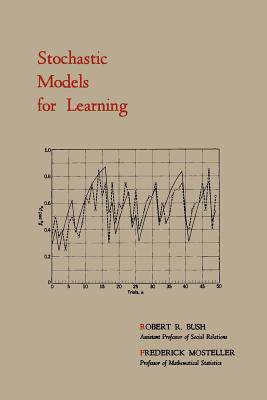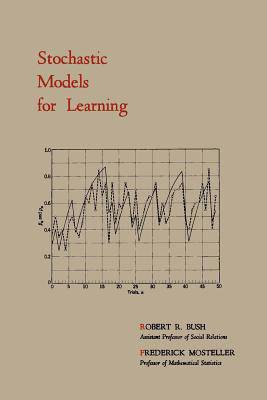
- Afhalen na 1 uur in een winkel met voorraad
- Gratis thuislevering in België vanaf € 30
- Ruim aanbod met 7 miljoen producten
- Afhalen na 1 uur in een winkel met voorraad
- Gratis thuislevering in België vanaf € 30
- Ruim aanbod met 7 miljoen producten
Zoeken
€ 24,45
+ 48 punten
Omschrijving
2012 Reprint of 1955 Edition. Exact facsimile of the original edition, not reproduced with Optical Recognition Software. A stochastic process is one in which the probabilities of a set of events keep changing with time. Bush and Mosteller make use of the mathematical techniques developed for the study of such processes in building a theory of learning and then apply the theory to explain the results of several learning experiments. Contents: Part I: The mathematical system and the general model -- 1. The basic model -- 2. Stimulus sampling and conditioning -- 3. Sequences of events -- 4. Distributions of response probabilities -- 5. The equal alpha condition -- 6. Approximate methods -- 7. Operators with limits zero and unity -- 8. Commuting operators -- Part II: Applications -- 9. Identification and estimation -- 10. Free-recall verbal learning -- 11. Avoidance training -- 12. An experiment on imitation -- 13. Symmetric choice problems -- 14. Runway experiments -- 15. Evaluations.
Specificaties
Betrokkenen
- Auteur(s):
- Uitgeverij:
Inhoud
- Aantal bladzijden:
- 382
- Taal:
- Engels
Eigenschappen
- Productcode (EAN):
- 9781614273196
- Verschijningsdatum:
- 11/07/2012
- Uitvoering:
- Paperback
- Formaat:
- Trade paperback (VS)
- Afmetingen:
- 152 mm x 229 mm
- Gewicht:
- 557 g

Alleen bij Standaard Boekhandel
+ 48 punten op je klantenkaart van Standaard Boekhandel
Beoordelingen
We publiceren alleen reviews die voldoen aan de voorwaarden voor reviews. Bekijk onze voorwaarden voor reviews.











